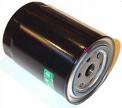
| Normal oil and oil filter change service is mandatory for long engine life. Today’s engines have more power which makes it imperative that you change your oil at regular intervals; every 3,000 miles or 3 months, whichever comes first. If your car uses synthetic motor oil you can extend mileage between changes up to 2,000 additional miles. Always use your manufacturer’s specific weight motor oil. This information is in your owner’s manual or a car repair manual. Also use an OEM or better style of oil filter to maximize engine life. |
| To change your motor oil and filter, first locate the oil filter. It is usually located around the oil pan of the engine. Remove the oil filter by turning it counter clockwise with a large locking wrench or an oil filter removal wrench. (Always wear protective gloves and eyewear when replacing.) Step 2 – Drain Oil Filter and Inspect Sealing Gasket After removing the oil filter, let it drain into the oil drain container. Then clean oil filter seal surface on the mounting flange on block, make sure the old oil filter’s sealing rubber gasket is off the mounting surface for the oil filter seat. On the new oil filter install a small amount of motor oil onto the rubber gasket of the new oil filter. Then reinstall new oil filter by turning it clockwise until tight. (Note: only tighten oil filter by “hand”) (Gloves suggested) Step 3 – Removing the Oil Pan Drain Plug Next, remove the oil pan drain plug. Using a wrench turn the drain plug counter clockwise. Be ready to grab the oil drain plug as it becomes dislodged. (Gloves suggested) Note: Always use the boxed or completed end of the wrench to avoid rounding of the drain plug hex. A socket wrench is also acceptable. Step 4 – Drain Engine Oil Once the drain plug is dislodged inspect the sealing washer on the plug, if worn, broken or the integrity of the seal cannot be maintained replace the plug washer with new. Let oil drain completely, reinstall oil drain pug and wipe clean with shop or paper towel. Note: drain plug just needs to be “snug” – not too tight. Step 5 – Adding Engine Oil After the oil has been drained out of the engine and new filter installed add motor oil to the engine oil fill port, this is usually located in the valve cover of the engine and is marked “add engine oil” on the cap. If the oil fill is in a difficult position you can use a funnel to help guide the oil. (The oil cap is upside down in this picture to prevent oil drippings) Most car and light trucks will take four to 5 quarts to fill to capacity. First add four quarts and reinstall the oil fill cap. Then start the engine and let run for 1 minute then shut off the engine and let stand for 2 minutes to assure all oil inside the engine is in the oil pan for proper measurement. Step 6 – Checking Engine Oil Level After you have run your engine, let stand for two minutes, then remove the oil dip stick level indicator to inspect oil level (the new oil in this photo has been darkened for visual effect, clean oil is difficult to see in photos) make sure the oil level is between specified lines on the indicator, add as needed to obtain proper oil level. If you don’t know when the last oil change was done on your vehicle and would like to determine where you stand remove the oil level inductor and check the clarity of the oil. If it is light color like Tea you are ok, if it is dark like Coke it is time for service. We recommend top quality oil filters and motor oils for your car or truck. In the course of driving 3,000 miles, an inferior style oil filter will allow carbon partials to stay in your engine, causing premature wear and possible catastrophic engine failure. Jimmy Rigler Dupius Auto Care |











